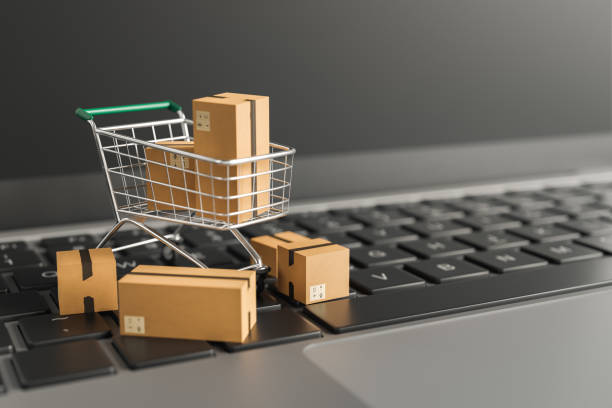The phenomenon of dropshipping stores has become popular in the context of e-commerce, which allows entrepreneurs to minimize risks when starting their business. Unlike conventional retail approaches, dropshipping stores let you offer products for the sale without having actual stock or personally manage the shipping process. Contained in this article, you will get all the information you require about dropshipping stores, the platforms to use and important requirements to succeed in this booming industry.
What Are Dropshipping Stores?
Dropshipping stores are internet-based retail businesses that do not require the owner to own stock. Rather, when a customer seeks the service of a particular product, the owner of the store passes the same order to a third party who provides the product as well as the delivery of the same to the customer. This model provides several advantages:This model provides several advantages:
- Low Initial Investment: The great thing is you are not required to buy inventory before you start selling it.
- Reduced Risk: Low Initial Investment: The great thing is you are not required to buy inventory before you start selling it.
- Flexibility: An advantage of using dropshipping stores is that you can run your business from any place you are as long as you have an internet connection.
However, as pointed out above, it is important to note that managing successful dropshipping stores is not as easy as it seems. Now let’s look at the top tools for creating and administering your dropshipping stores and determine the most effective tactics to help you thrive.

Top Platforms for Dropshipping Stores
It is therefore important if you have to consider the right platform for your dropshipping stores. Every service provides a set of tools, options, and performance characteristics. Here are the top platforms to consider:
1. Shopify
The shopify is one of the most popular platforms for the dropshipping stores, which are very useful and supply a lot of features. Here’s why it’s a top choice:Here’s why it’s a top choice:
- User-Friendly Interface: This means that even if you are not very tech-savvy, you can easily be able to design your shopify dropshipping stores without much struggle.
- Dropshipping Integrations: Dropshipping services are also easily linkable to Shopify platform, there are available apps such as Oberlo, Spocket and AliExpress.
- Customizable Themes: Select from a list of professional and sleek and appreciable presenting themes for the dropshipping store.
- 24/7 Support: Shopify provides round the clock customer support services to make sure that anytime you encounter a problem with the shop that you have created for your dropshipping business, someone will always be there to help.
Shopify has rich set of features and nothing complex about it which makes this platform suitable for both a beginner and an experienced entrepreneur seeking to start a profitable dropshipping business.

2. WooCommerce
For those who already use WordPress, WooCommerce is essentially an incredibly flexible plugin that can transform a standard WordPress site into an actual dropshipping store. Key benefits include:
- Flexibility and Customization: One thing that makes WooCommerce stand out from other platforms is the great flexibility the customers have when it comes to customization of the shop.
- Integration with Dropshipping Plugins: Using plugins such as AliDropship and WooDropship to help in managing products, and orders to be shipped.
- Cost-Effective: WooCommerce is a plugin that is applicable without extra charge while charges may occur from premium warranties, themes, and plugins.
WooCommerce is ideal for users, who would like to concentrate on the power of WordPress to create a colossal and wholly customizable dropshipping store.

3. BigCommerce
BigCommerce is a powerful platform designed for scalability and advanced functionality, making it suitable for growing dropshipping stores. Here’s why:
- Built-In Dropshipping Support: Dropshipping is one of BigCommerce’s default features and it collaborates with apps such as Printful and SaleHoo.
- Advanced SEO Tools: It has ample of SEO facility through which you can improve your dropshipping store online presence in the search results.
- Multi-Channel Selling: Multi-channel integration: BigCommerce allows your dropshipping business to sell through the various channels including the social selling and marketplaces.
Any organization that wants to expand their dropshipping stores, have everything that they require for that goal with BigCommerce.
4. Wix eCommerce
Wix eCommerce is ease to use with its user interface resembling a site builder where you can drag and drop your elements. It offers:
- Ease of Use: It is also important to know that the platform is user-friendly and despite not being a Wix dropshipping expert, any person can create and run a dropshipping store effortlessly.
- Design Flexibility: Select from the range of open-source templates and designer pre-made store design features to assemble an exclusive dropshipping shop..
- Dropshipping Apps: Though, not as diverse as Shopify, Wix comes with several applications that will facilitate the work of your dropshipping stores.
If you want a platform that is easy to use and very flexible with design then Wix eCommerce is perfect for your dropshipping stores.

5. Magento
Magento is an excellent solution designed for open-source for bigger dropshipping stores that may require more features. Benefits include:
- Customization: It is necessary to understand that Magento offers unlimited opportunities for customization, thus, you can create a truly specialized dropshipping stores.
- Scalability: This could be seen as a benefit because Magento is open for the community of developers and users who can give their assistance.
- Community Support: Magento has a strong community of developers and users who can offer support and insights.
Magento is for those shop owners who have enough experience and are willing to get a highly customizable and scalable solution for their dropshipping store.
Tips for Success with Dropshipping Stores
As is apparent, choosing the platform to run a dropshipping store is not the only thing that will ensure success. Here are essential tips to help you excel:
1. Choose the Right Niche
Choosing the right niche, one that is profitable is very essential for the success of your dropshipping company. Consider the following steps:
- Market Research: Devote time researching the market so that he or she can find out potential products with high demands but low competition.
- Target Audience: Dependent upon the target audience, companies should select items that are Liked by consumers and disliked by consumers.
- Profitability: Evaluate possible profit margins to see whether your dropshipping stores is financially feasible.
The advantage of choosing a particular niche in the case of dropshipping store is that the store will target the specific market and hence, have higher chances of getting sales.
2. Source Quality Products
Products you offer through your dropshipping store can define customer experience, and this is quite important. Here’s how to ensure product quality:
- Supplier Vetting: Ensure that you have a good relationship with the suppliers of the products so that you can obtain quality products and delivery on time.
- Product Testing: Use the products to compare them with the standard ones in order to determine if they warrant a place in your drop shipping store.
- Supplier Communication: Communicate with suppliers so that in case of any problem it is solved on time.
Under pressure to improve your dropshipping store’s image and gain public trust, all you need to do is source better quality products.

3. Optimize Your Store for SEO
When it comes to improving traffic to the dropshipping store, SEO is critical in directing traffic to the site. Implement these strategies:
- Keyword Optimization: Make sure to incorporate specific keywords in the content of your store ranging from descriptions, titles, and meta tags.
- On-Page SEO: Enhance SEO for each page by proper tagging of the headings, meta description, and images to the webpage.
- Content Creation: Develop useful content which may be of interests to the target market regarding what your company offers.
High-quality optimizations have a positive impact on the store’s rank in search engine results, introducing more users to your Website.
4. Implement Effective Marketing Strategies
Marketing is the process of creating awareness of your dropshipping store to the general public or your target market. Consider these approaches:
- Social Media: Facebook, Instagram, and Pinterest are some examples of social media that you need to employ to market you products and interact with your clientele base.
- Email Marketing: Build an email list then establish an email marketing campaign that will enable you to market your products and also maintain the customer relations.
- Paid Advertising: Promote using Google AdWords, and Fb Ads among other methods to get a wider client base.
A well-rounded marketing strategy will drive traffic and sales to your dropshipping store, helping you achieve your business goals.

5. Focus on Customer Service
A company should work hard to treat it’s buyer with lots of respect and this will warrant them to remain loyal. Here’s how to excel in customer service:
- Responsive Support: Provide timely and appropriate answers to customers’ questions and complaints.
- Clear Policies: Return and Exchange policies must be well defined to enhance flow of customers.
- Personalization: Attach specific outcomes to personalize the customers’ experience with the store to improve on the general use of the dropshipping business.
Good customer service will guarantee you good follows on your dropshipping stores, hence more business.
6. Monitor and Analyze Performance
It is crucial to frequently track and evaluate your dropshipping store’s performance to ensure its constant profitability. Use analytics tools to track:
- Traffic Metrics: Track the traffic and engagement to your dropshipping stores and comprehensively assess it.
- Conversion Rates: Quantize the extent to which your store is successful in ‘converting’ the website visitors to buyers.
- Sales Data: Track sales performance to identify trends and areas for improvement.
When evaluating the performance data, you will make the right choices of improving the working of your dropshipping stores and profitability.
7. Stay Updated with Industry Trends
It is therefore important to keep abreast with various trends that are present in the e-commerce industry. Here’s how to keep up:
- Industry News: To be specific, use blogs, news websites, social media, online forums and any other channel that provide information relating to the industry.
- Events and Webinars: Participate in industrial meetings, webinars, workshops or seminars as they provide an avenue for gaining ideas from other experts and colleagues.
- Continuous Learning: Continue learning to be in a position of updating yourself on any new tools, technologies and approaches that might be available in the market.
You should always ensure that you are updated on the current trends hence be in a position to embrace changes on the market for effectiveness of your dropshipping stores.

Building Your Dropshipping Store Brand
It is essential to endeavor to build your brand from the ground up to help your dropshipping store stand out from the rest. Consider these steps to build a memorable brand:
1. Define Your Brand Identity
- Brand Values: Select and communicate the values and mission to the people involved in your dropshipping store.
- Visual Identity: Create an original logo, colors and shapes to make your brand persona
- Brand Voice: It’s important to build a coherent style for all the communication between the brand and a customer through the descriptions of products, posts in the social networks, and replies to customers’ messages.
2. Create a Compelling Store Design
- User Experience: Select an appealing layout and easy-to- use interface that would ensure the customers can easily find the products in your dropshipping store.
- Visual Appeal: Select high-quality images and beautiful design patterns to avail a decent and professional appearance of the store.
- Mobile Optimization: Make your dropshipping store responsive to allow the customers to shop even when they are on the move.
3. Build Trust and Credibility
- Customer Reviews: Ensure the ‘happy ’ customers to leave their comment and testimonial to increase the trust of the prospective buyers.
- Trust Badges: Show trust seals logos or other safety symbols to make the customer have confidence on the transactions they want to make.
- Transparency: The company needs to disclose information that is relevant to shipping time, return policies and other aspects that are credible.

Managing Logistics and Fulfillment
Logistics and fulfilment are some of the most important aspects that you need to master as a dropshipping store owner. Here’s how to manage these aspects effectively:
1. Streamline Order Processing
- Automation: Automate the order processing function so that they will not have to key in most of these details themselves.
- Order Tracking: It is important for customer to be informed about their order so as to improve their experience while shopping.
- Supplier Coordination: Bus 210/>Email and communicate with the suppliers on a regular basis to guarantee order deliveries on time.
2. Handle Returns and Exchanges
- Return Policy: It is crucial to set up an effective return policy whereby to regulate cases of returns and exchanges.
- Customer Communication: To ensure the customers are satisfied with the return or exchange services, ensure that they’re contacted early enough.
- Process Efficiency: Ensure that you have a proper way of handling your returns and exchange requests so as not to disrupt your usual flow of business in your dropshipping store.
3. Manage Inventory Levels
- Inventory Monitoring: Maintain records of goods in stock with an aim of being a507fore knowing when it is time to order a new batch and when it is time to reduce the order to avoid having too much stock.
- Supplier Coordination: Consult with the suppliers to ask them whether they are in a position to supply enough products to make up for the stock out supplies.
- Demand Forecasting: Anticipate the number of customers by employing data and analytics to know when to restock.

Scaling Your Dropshipping Store
When you start selling on the dropship store you intend to start, it’s critical to ensure that you expand the business. Here’s how to scale effectively:
1. Expand Product Offerings
- Market Research: The next step is to find out other products that come under the same niche and which have high demands in the market.
- Supplier Partnerships: Find new suppliers to add to your list to help you diversify your current offerings.
- Testing: Try new products with a limited stock before adding them to your collection at the dropshipping stores.
2. Explore New Marketing Channels
- Influencer Marketing: This is where you should get in touch with popular bloggers who are active in your niche to promote your dropshipping stores.
- Content Marketing: Blogging, video marketing, webpage content, and material published on social media should be the kind of content marketing worth investing in to reach the audience.
- Affiliate Programs: Think over using affiliate marketing to inspire other individuals to market your dropshipping store.
3. Optimize Operations
- Process Improvement: Be sure to re-visit and make changes on the processes to help minimize wastage of resources.
- Technology Upgrades: Utilize resources that would enhance the performance of the various processes through the use of technology.
- Customer Feedback: Develop changes with the feedback given by the customers hence improving the general shopping experience.
Avoiding Common Pitfalls in Dropshipping Stores
Some rules and traps should be observed for dropshipping stores In contrast, different types of stores give many advantages. Here are some tips to help you steer clear of these challenges:
1. Avoiding Low-Quality Suppliers
- Research: Ensure that you carry out a research to ensure that you identify the right suppliers who meet your order demand for quality and timely shipment.
- Testing: Make an order to ensure that you receive the best quality products for sale in your dropshipping store.
- Reviews: For instance, one can look at how suppliers that have been hired before have been rated by others with a view of knowing their reputation.
2. Managing Customer Expectations
- Clear Communication: These include expectations such as the shipping time, the availability of the product and the return policy.
- Realistic Timelines: Give accurate delivery time estimates and report to the customer if there’s a change in the time estimates.
- Transparency: Communicate clearly any problems or alterations that may have an influence on any of the consumers.
3. Avoiding Overreliance on One Supplier
- Diversification: Engage with several suppliers so that you can avoid the impact of supply shocks and have a fast supply chain of your products.
- Backup Plans: Running backup suppliers also help should your primary supplier experience some problems.
- Supplier Relationships: Develop good relationship with suppliers for the purpose of having commitment and steady service.

Final Thoughts
First, dropshipping stores can be seen as effective opportunities for the entrepreneurial entry into the e-commerce environment with very low risk and minimum investments. Exploring the right channel, identifying the right category, or acquiring the right products, and applying right measures give you a successful and unique dropshipping store in the market.
Whether it is configuring your store for SEO and marketing approaches, sales, support services, or growing your business, each one contributes to your dropshipping store’s achievements significantly. If you are committed, well-planned, and work on the constant evolution of the store, you can have a highly converting and profitable dropshipping business.
In conclusion, it can be stated that by considering those basic as well as advanced tips mentioned above, one can easily create and improve his or her dropshipping store and go far away in the e-commerce business.



